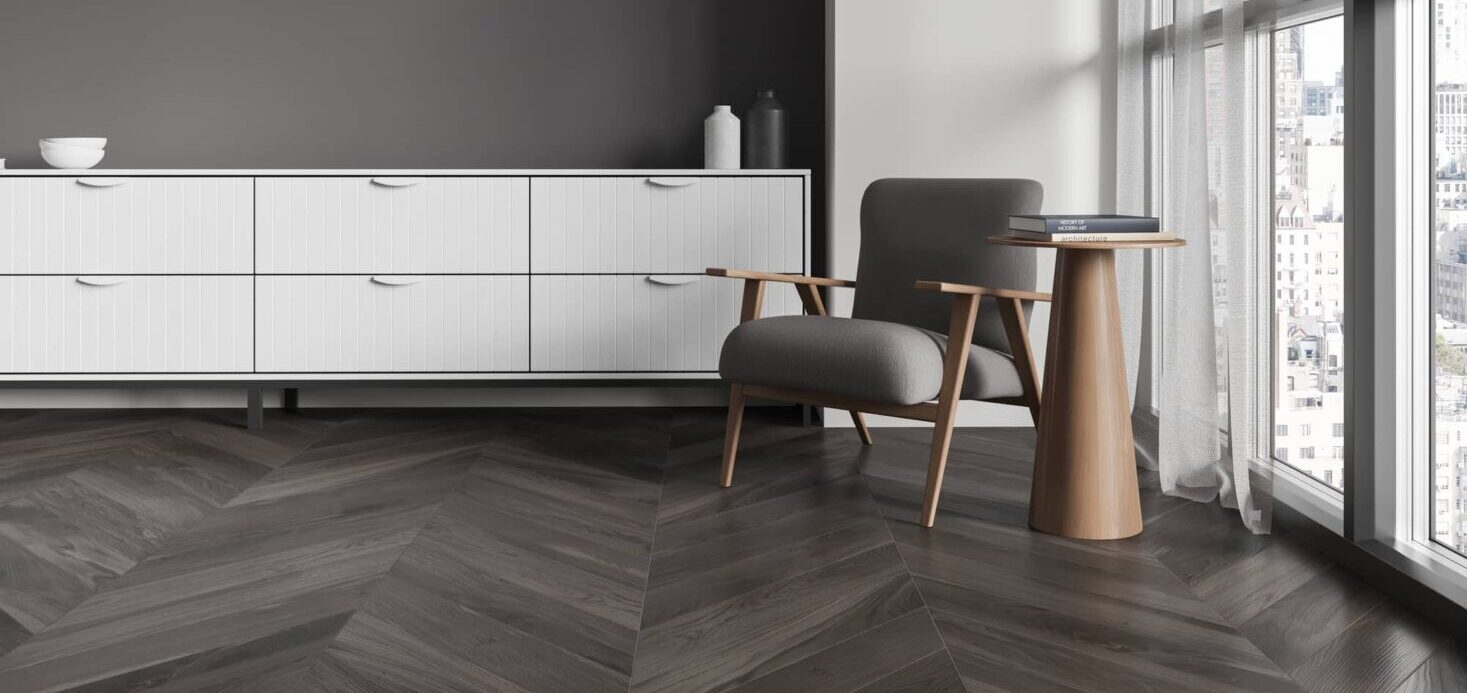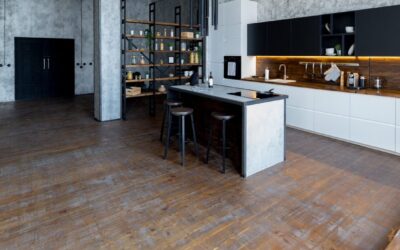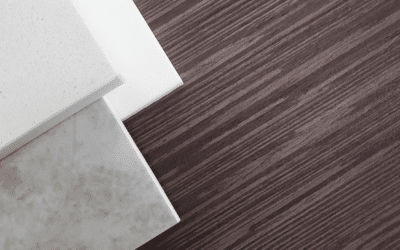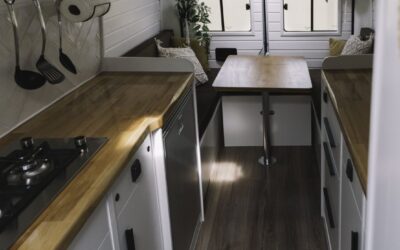Both worthy opponents, vinyl plank flooring and porcelain tiles are popular home commodities. Porcelain tiles are undoubtedly charming, with a beautiful appearance and resilient surface. Yet installation can be tricky and costly. In the era of DIY, luxury vinyl is often more attractive to homeowners, but does it offer the same resilience and aesthetic appeal? Let’s find out.
In this article, we’ll examine the benefits of vinyl plank flooring vs porcelain tile. We’ll also highlight the areas where each option wins and where each option falls short.
Which is Better, Porcelain Tiles or Vinyl Flooring?
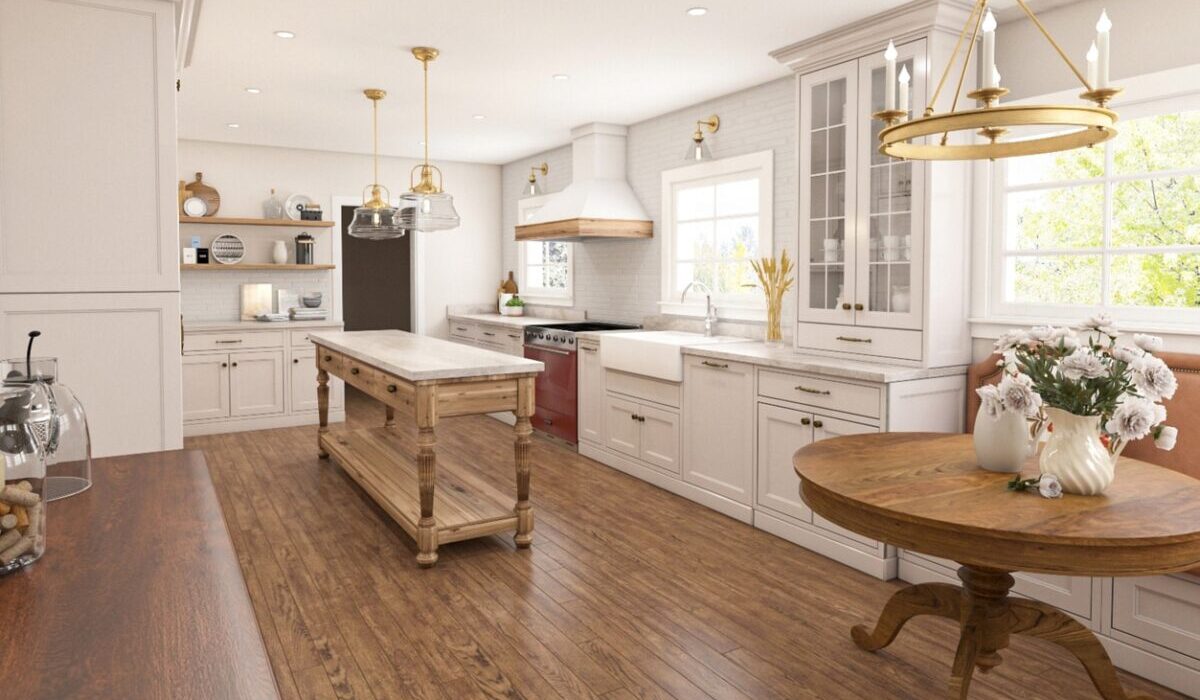
When it comes to the main areas – ease of installation, costs, flexibility, etc. – luxury vinyl is perceived as better than porcelain tiles. Vinyl plank flooring is easier to install, cheaper, more flexible, and warmer underfoot compared to porcelain tile.
In terms of longevity, porcelain tile is likely to last longer than luxury vinyl. Porcelain can last as long as 50 years – unless it shatters, which can happen at any time, regardless of age. The grouting can also get dirty quickly and wear away over time. Luxury vinyl is resilient and shouldn’t crack, but over long periods of use, it can begin to look tired.
Appearance-wise, it depends on what you prefer. Porcelain tile is sleek and often considered luxurious, which is why it can add value to a property. Luxury vinyl, on the other hand, can mimic the appearance of real stone tiles, yet it will never look exactly like the genuine product.
When it comes to warmth, luxury vinyl is warmer underfoot. It pairs well with underfloor heating, but porcelain tiles have a naturally better thermal retention, so it heats up faster compared to luxury vinyl.
Luxury Vinyl vs Porcelain Tile Comparison Chart
Ease of Installation
Winner: Luxury vinyl
While installing tiles isn’t too tricky of a process, it requires more specialist tools and significantly more effort compared to luxury vinyl tiles.
To install luxury vinyl, you should lay an underlayment (unless it comes with a built-in underlay, like with Happy Feet) and click the planks together on top of it. Cuts can easily be made by scoring the plank with a cutting knife and snapping the edge.
To install tiles, you have to establish a self-leveling compound or cement backer board. The tiles should then be laid in place to allow you to determine which cuts to make. Any cuts need specialist tools to prevent the tiles from splitting.
Adhesive is then applied to the floor and the tile is pressed down in perfect alignment. Spacers should be used to ensure the gaps between tiles are even. Once the adhesive dries, grout is applied to finish the installation.
Costs
Winner: Luxury vinyl
Luxury vinyl tiles or planks are designed as a budget-friendly, DIY-friendly option for homes and commercial spaces.
Per square foot, luxury vinyl is typically less expensive compared to porcelain tile. Installation is also significantly cheaper, with porcelain tile being fairly difficult to achieve as a DIY project.
Installing or cutting porcelain tiles in the wrong way can also be costly. It can lead to material wastage or an uneven floor that requires redoing entirely to fix.
Most people opt for a professional to install porcelain tiles to avoid some of these issues, which means labor charges also need to be factored into the purchase price.
Longevity
Winner: Draw?
When it comes to longevity, there are pros and cons of both luxury vinyl plank flooring vs porcelain tiles. Luxury vinyl is more resilient and can withstand impact better than porcelain tile.
If something heavy drops or is placed down, tiles can easily crack. Whereas luxury vinyl tiles (LVT) can withstand heavy impact and won’t break under the pressure of heavy appliances, like washers and dryers.
Grouting in between porcelain tiles can also get dirty very quickly, which can be difficult to clean away entirely over time.
Tiles are, however, just as long-lasting as luxury vinyl. In fact, provided tiles aren’t subject to any brute force, they may last longer in a home compared to LVT thanks to their strong and resilient surface.
Appearance
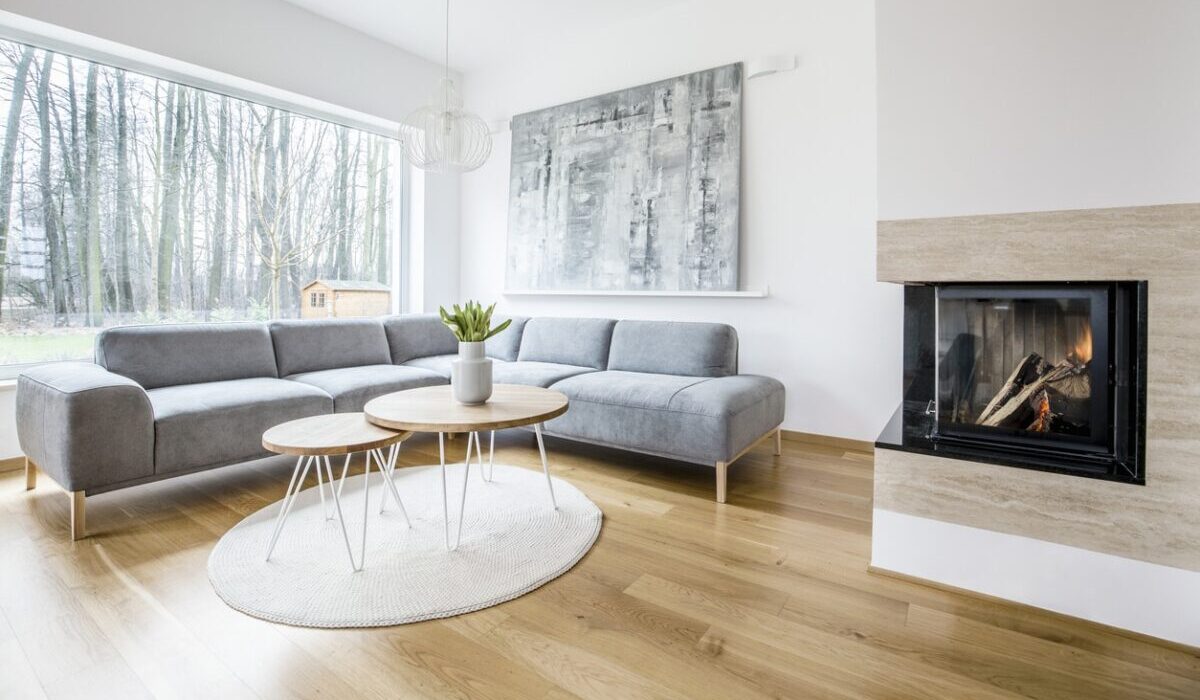
Winner: Draw?
Both vinyl plank flooring vs porcelain tile are beautiful choices for the home. Which is best for your home depends on your personal preferences.
The beauty of luxury vinyl is that you can choose between flooring that looks like wood or stone-look vinyl tiles that mimic the appearance of real tiles that are significantly easier to install yourself.
Yet vinyl planks or tiles will never capture the full essence of the genuine product, so if natural is what you prefer, porcelain tiles may be the best choice for you.
Flexibility
Winner: Luxury vinyl
Porcelain tiles aren’t just harder to install, they’re also significantly harder to remove compared to luxury vinyl.
Removing tiles when you want to change your flooring requires a chisel and hammer. This can destroy the tiles and potentially the floor underneath.
Whereas removing vinyl planks is much easier, as the planks can simply be unclipped and even re-used in another area of the home.
Warmth
Winner: Luxury vinyl
Luxury vinyl tiles with padding (not cork) retain heat exceptionally well via a cushioned layer beneath the plank. This can help with interior insulation, as once a room is heated, it can stay warmer for longer with luxury vinyl.
While porcelain tiles won’t necessarily let the warmth out of your home any more than luxury vinyl, tiles feel significantly colder underfoot.
This can be particularly uncomfortable in colder climates or in areas of the home where you walk barefoot, like in the kitchen or bathroom.
Thermal conductivity
Winner: Porcelain tiles
There’s no reason why you can’t install underfloor heating with luxury vinyl plank flooring or porcelain tiles.
Yet tiles have a high thermal conductivity, so tiles are more efficient when paired with underfloor heating compared with luxury vinyl planks.
Luxury vinyl heats up slower compared to porcelain tiles, which can make it slightly less efficient in the home.
However, it’s important to remember that vinyl planks are naturally warmer underfoot compared to tiles, so even though they don’t warm up as quickly, they’ll still feel warmer than tiles.
FAQs
Is Vinyl Plank Flooring Better Than Vinyl Tile?
Vinyl plank flooring isn’t necessarily better than luxury vinyl tile. Both options are strong, water-resistant, easy to maintain, and generally inexpensive. Provided the floors are installed properly, they both last just as long as each other.
The main difference lies in the appearance. Luxury vinyl plank (LVP) flooring comes in long, rectangular-shaped boards. It mimics the look of natural wood, offering a rustic, homely aesthetic.
Whereas luxury vinyl tile (LVT) generally mimics the appearance of real tiles. Collections can look like porcelain tiles, ceramic tiles, marble tiles, or patterned tiles.
Is It Cheaper to Install Tile or Vinyl Flooring?
It’s cheaper to install luxury vinyl flooring compared to tile. Vinyl flooring is easy to install yourself with minimal tools or prior experience.
You can usually cut boards using measuring tape and a utility knife. It’s also hard to get it wrong and mistakes are easy to fix. For example, if you cut a board to the wrong length, you can normally reuse it somewhere else.
Whereas installing tile requires significantly more time and skill. Specialist tools are needed to cut through tiles, like a sharpened tile cutter, and you need to undertake more preparation work before installation.
Mistakes can also be costly when installing tiles yourself. An unsharpened blade can shatter a tile, or an unlevel placement can be difficult to fix. Professional installation is recommended, which adds to the costs of tile installation.
Find Your Match Today
Luxury vinyl takes the lead in terms of its benefits, which is why it’s seen as the modern choice in America’s homes today.
Ready to find your perfect match? Explore our collection of luxury vinyl planks and luxury vinyl tiles for your home today.
Read about tile vs. laminate flooring.
Need inspiration? Use our room visualizer to test different floors in your home and find your style.
